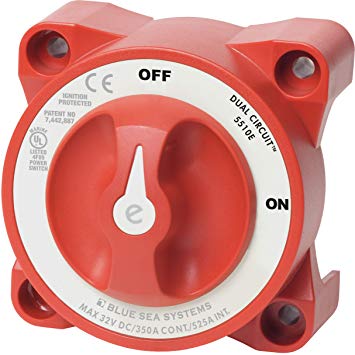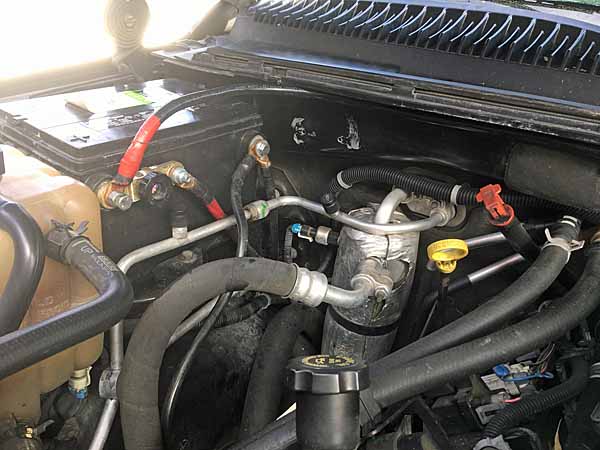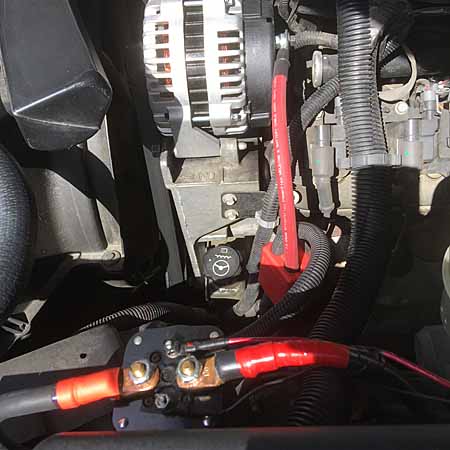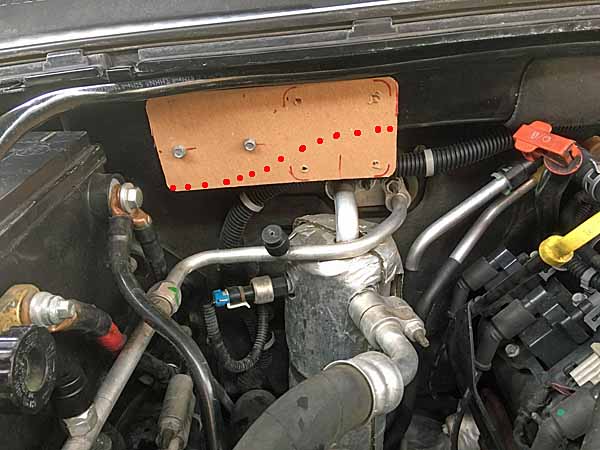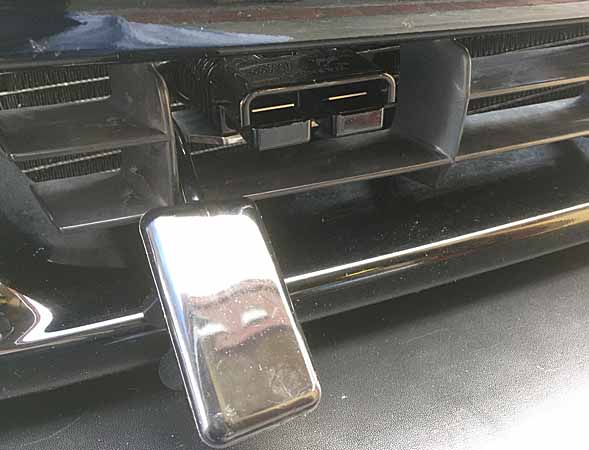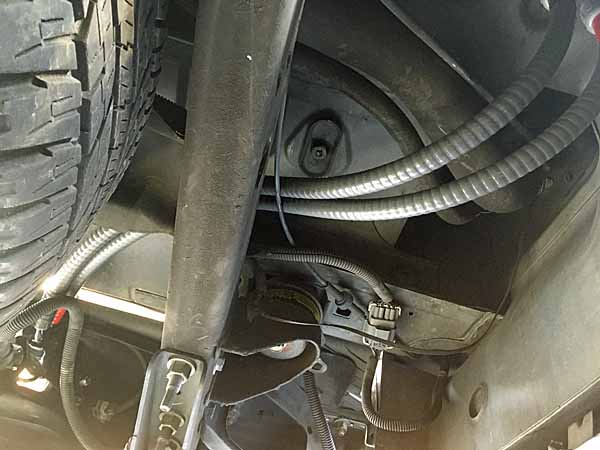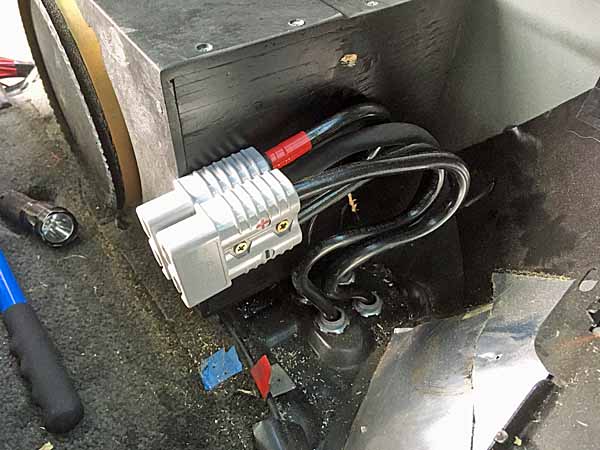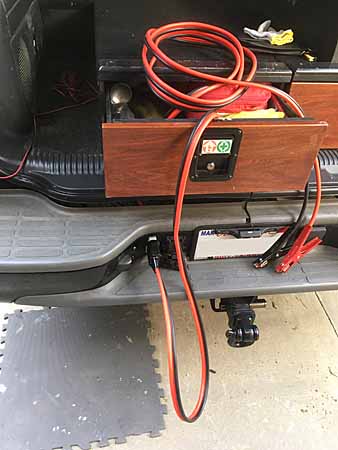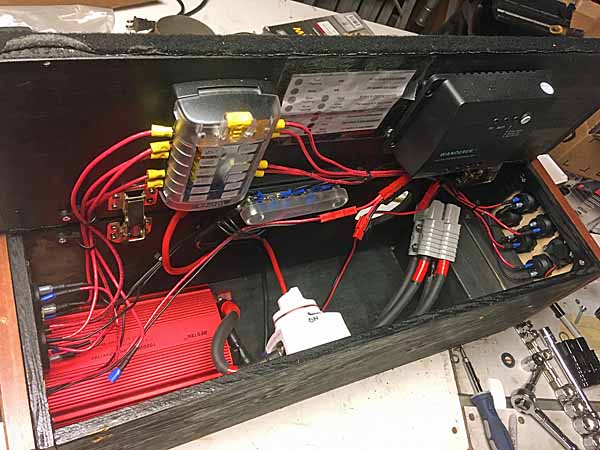Would like to see a schematic of your setup; sounds like a good route!
I'd like to see one too! lol Never got around to that part. Lots and lots of pics in my build thread though. It's essentially the '$50 solenoid' setup, though, but with a LOT of extras and options.
My generation Sub had an easy option for a 2nd under-hood battery, so I found the factory tray. I initially mounted the 200A combiner solenoid near that Aux on the firewall. Ran a 1/0 cable (commercial / residential THNN, thick strand, very stiff and difficult to shape, but inexpensive) from the Starter Battery (+) to the solenoid and from the solenoid to the Aux. Solenoid triggered with a wire run from a keyed-on accessory fuse under the dashboard.
As I all along intended a carrier-mounted winch, usable at both ends of the vehicle, I ran 1/0 from both Aux terminals down and under and along the frame and up thru the rear cargo area floor, in the sidewall. I was also building a platform and storage drawers and decided to incorporate a 'power module' with just about everything I could think to throw in it - and double - panel mounted sockets, connections, USB chargers on both the rear and forward faces on the box. The box would stay if the drawers cam out and the 3rd row bench put back in and I wanted the various power outlets facing forward too.
And that's the way it stood for a couple years, while I was busy with other things.
I've only in recent weeks been accumulating all the parts for the winch installation and the final array of Anderson SB175 plug components, another 30' of 1/0 (but thin strand welding cable this time, needing the flexibility), various ring terminals, rotary switch etc. In just the last few days I've completed the wiring extension running from the rear box back out and thru the floor to the rear bumper plug, which I also completed very recently. I just finished the cabling / plug addition in the power box today, courtesy of some swift service by powerwerx.com - I've been getting most of my 12v and APP stuff from them, great service, no connection, just a happy customer - and tonight I was working on the mounting plate to hang the Blue Sea rotary switch where I initially had mounted the solenoid, by the Aux. on the firewall / coaming. The (+) to the plug in the front grill will be interrupted by that rotary.
I also very recently relocated the solenoid to the 'power center' near the Starter battery. Which also puts it near where the charge lead from the alternator ties into the main Battery-to-Starter cable run. The solenoid and that little red plastic junction box are less than a foot apart, laterally. So I finally connected the Aux is it sort of should have been from the start. It's connected (via the solenoid) to the same point of contact as the Starter battery and the alternator. Not that electricity particularly cares. And ALSO I upgraded to a 200A+ alternator and replaced its puny factory charge lead to yet more 1/0 cable.
When it's all done (in about a week), I'll have 200A from ALT to both batteries and bumper to bumper and 1/0 connecting all throughout. I even modified a nice new 20' set of 4awg jumper cables with a pair of anderson plugs near one end, so that 200A can reach another 18-1/2' foot from either end of the vehicle. I still don't actually have a winch yet. Sooon.
Along the way I added a folding solar panel into a lockable rooftop frame and put the PWM controller in that rear power box, backfeeds the Aux thru that 1/0 cable run. All the cables underneath are each in their own flexible PVC conduit for extra protection and fastened along the top edge of the frame rails / members. The conduit runs are also as watertight as I could make them. And I'm putting weather boots on both ends of both end plugs, which will both be left 'off' when not actively in use.
I don't have a list, but I don't think I've spent more than $1000 on everything (electrical), spread across the last 4yrs.
